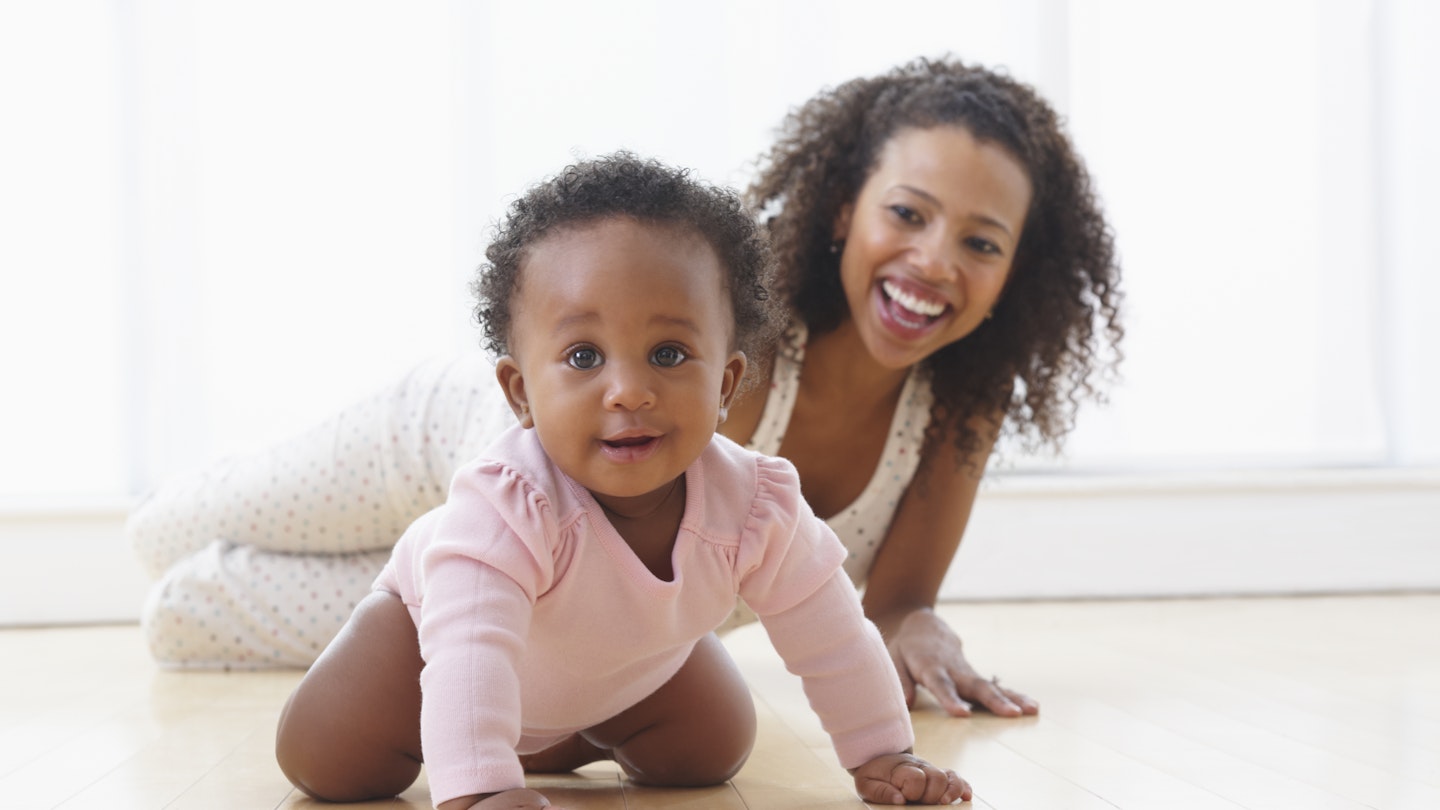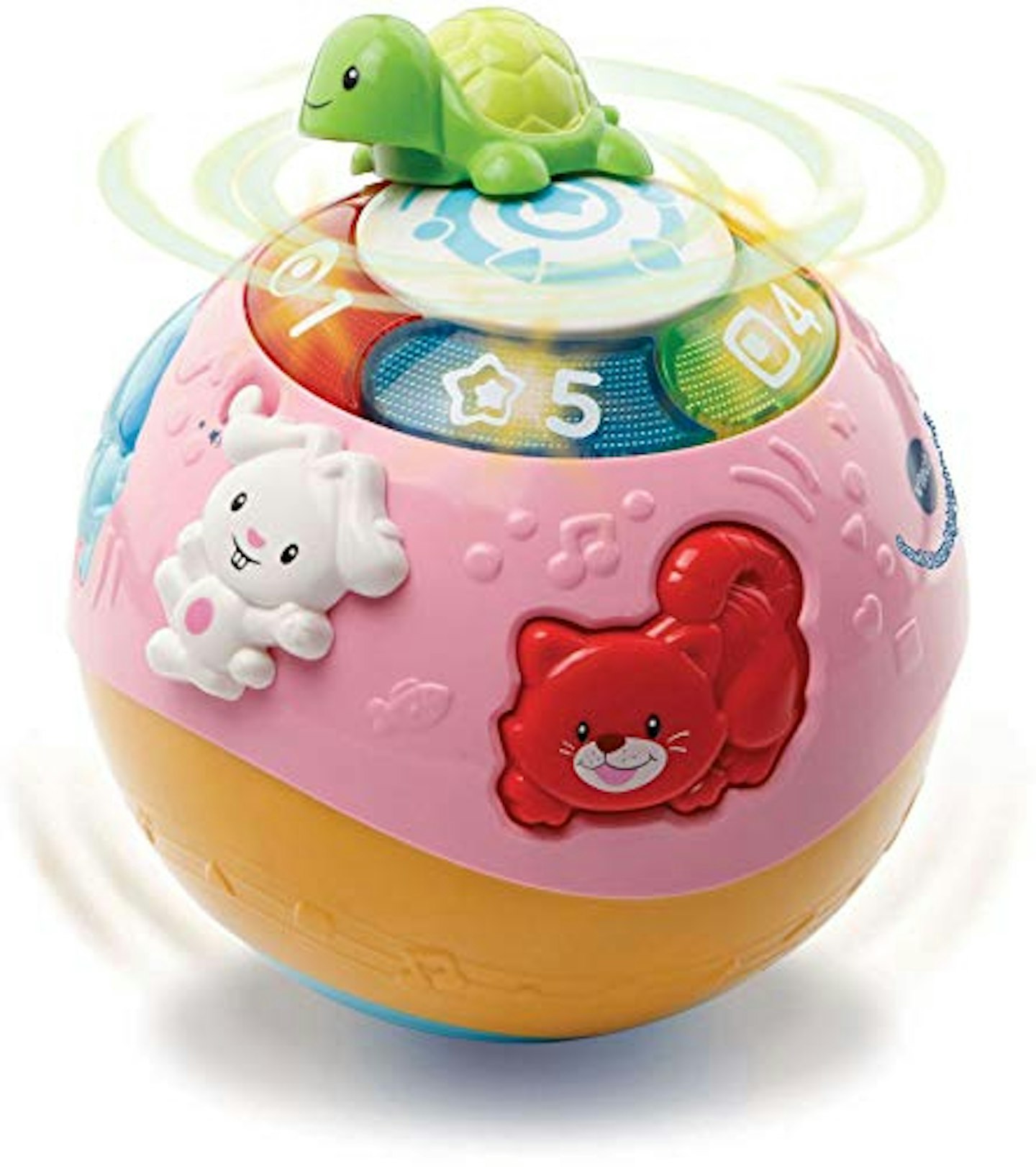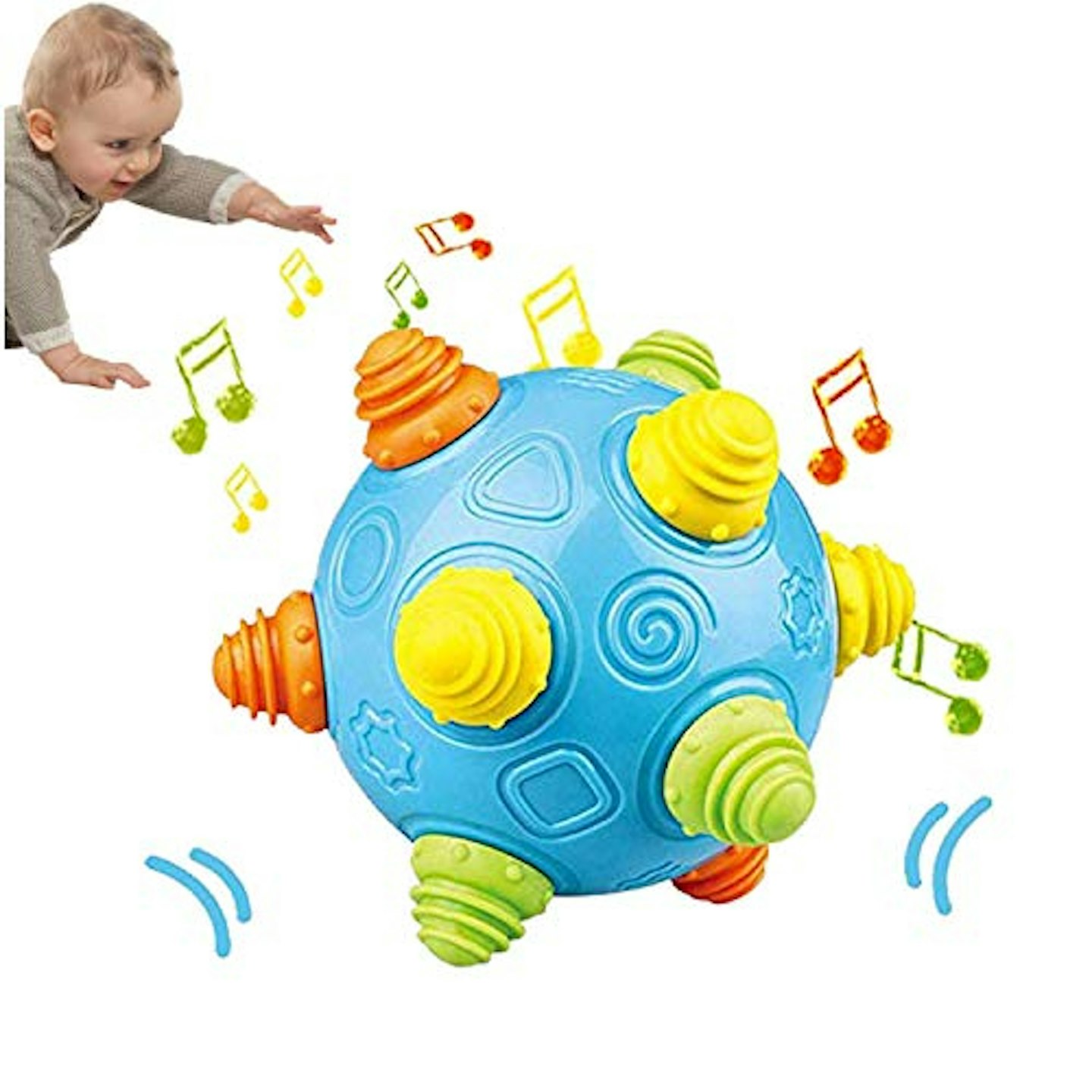While all babies learn to crawl in their own time you may be wondering what things you can do to help your baby crawl. From the moment they are born, your baby is working towards the day when they can move their own body weight to get to where they want to be and start crawling. And once they master it, life will never be the same again.
‘It’s a big baby milestonebecause this is the moment when your baby starts to be able to explore his world independently,’ says Sally Goddard Blythe, International Director of the Institute for Neuro-Physiological Psychology. You’ll learn all sorts of things about your baby's personality and preferences once they are in charge of where they're going. ‘And that exploration kick-starts all sorts of developmental milestones, from improving his spatial awareness to problem-solving,’ adds Sally.
There are all sorts of things you can do to encourage your baby to crawl and master independent movement. By playing games and doing activities that target the skills and strengths, you’ll support their development and have loads of fun together while you’re at it. Here we share some tips and tricks to help get them going.
How to encourage baby to crawl
1. Let it happen!
Your baby has been working towards independent movement from the moment they were born, and their brain and body know exactly what to do. So while there are lots you can do to support your tot's journey, it’s important that you’re a passenger along for the ride, and not sitting in the driving seat!
You’ll witness a lot of behaviour that might, on the surface, seem like your baby is trying to crawl but can’t. But it’s all a vital part of the journey. ‘Babies are born with a set of primitive reflexes – or instinctive reactions,’ says Sally. ‘These are hard-wired into their brains. But over the first months of your baby’s life, as they mature and gain experiences in the world, the neural pathways in their brain develop and over-ride these primitive reflexes, allowing their movements to become more controlled. So, during their first year, they progress from involuntary responses to purposeful movements.’
And that’s a process that needs to happen. For example, one of these reflexes is called the Symmetrical Tonic Neck Reflex. And you might see it in action when your baby first gets up onto their hands and knees in a crawling position. ‘In this position, if your baby’s head and neck is flexed,’ says Sally‘ In response, the reflex prompts your baby to flex his arms and legs – which makes crawling impossible! So, at this point, many babies will start to rock on their hands and knees. And this movement helps to inhibit the reflex so that your baby can look down without needing to bend his arms.’ Clever huh? If their brain doesn’t over-ride this primitive reflex, a baby might start to bunny hop – moving their arms first, and then bringing their legs forwards – or bum-shuffle, scooting along on their little bottom.
So, the most important thing you can do to help your youngster learn to crawl is to let them master it at their own speed. ‘Give them lots of opportunity for movement and encourage them to crawl, but never push them to do something he isn’t ready to do,’ says Sally. ‘Babies are born with an innate drive to make these movements and build up these skills, but they each do it in their own time. So, give your baby space and opportunity to move when they're awake and alert, and let them rest when they're tired!’
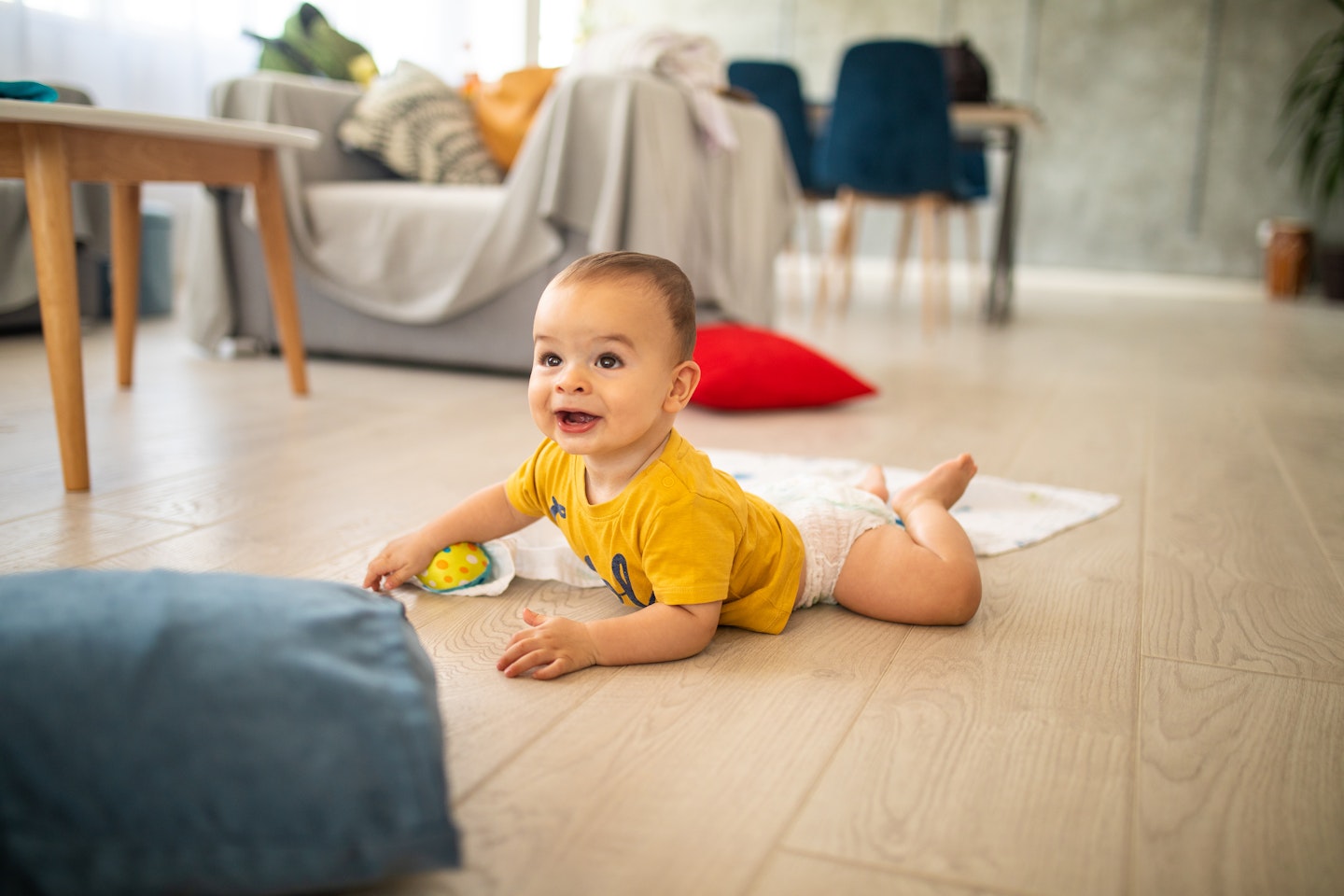
2. Do tummy time
‘When your baby lies on their tummy, they start trying to lift his head, which builds his neck and upper trunk strength and feeds into the development of head control. And head control is vital for the development of other muscle groups that are essential to later posture, balance, coordination – and even to the eye movements older children need when they read and write.’
So don’t stop with the tummy time just because they've learnt how to sit up. ‘Once your baby has the strength to raise their head in this position, they can start to bring their arms in under their body to prop themselves up and, eventually, to push themself up, learn to roll over and move towards crawling,’ says Sally. Of course, they might roll over or move into a sitting position after you’ve laid them on their tummy, and that’s fine – every movement will increase their head control, coordination between the two halves of their body and muscle tone!
3. Massage
‘Babies learn about their bodies through being touched as well as using them,’ says Sally. ‘Baby massage is a gentle way to help your baby start to gain a “mental map” of where their body begins and ends.’
4. Blow raspberry kisses
Touch your baby’s foot, give them a smile and say ‘foot’. Then blow a soft raspberry on their foot. Touch their ankle, give them a smile and say ‘ankle’. Then blow a soft raspberry on their ankle. This helps to teach your baby about their body through sound and touch. As they get older, they'll start to anticipate the raspberry kiss and the giggling will start…!
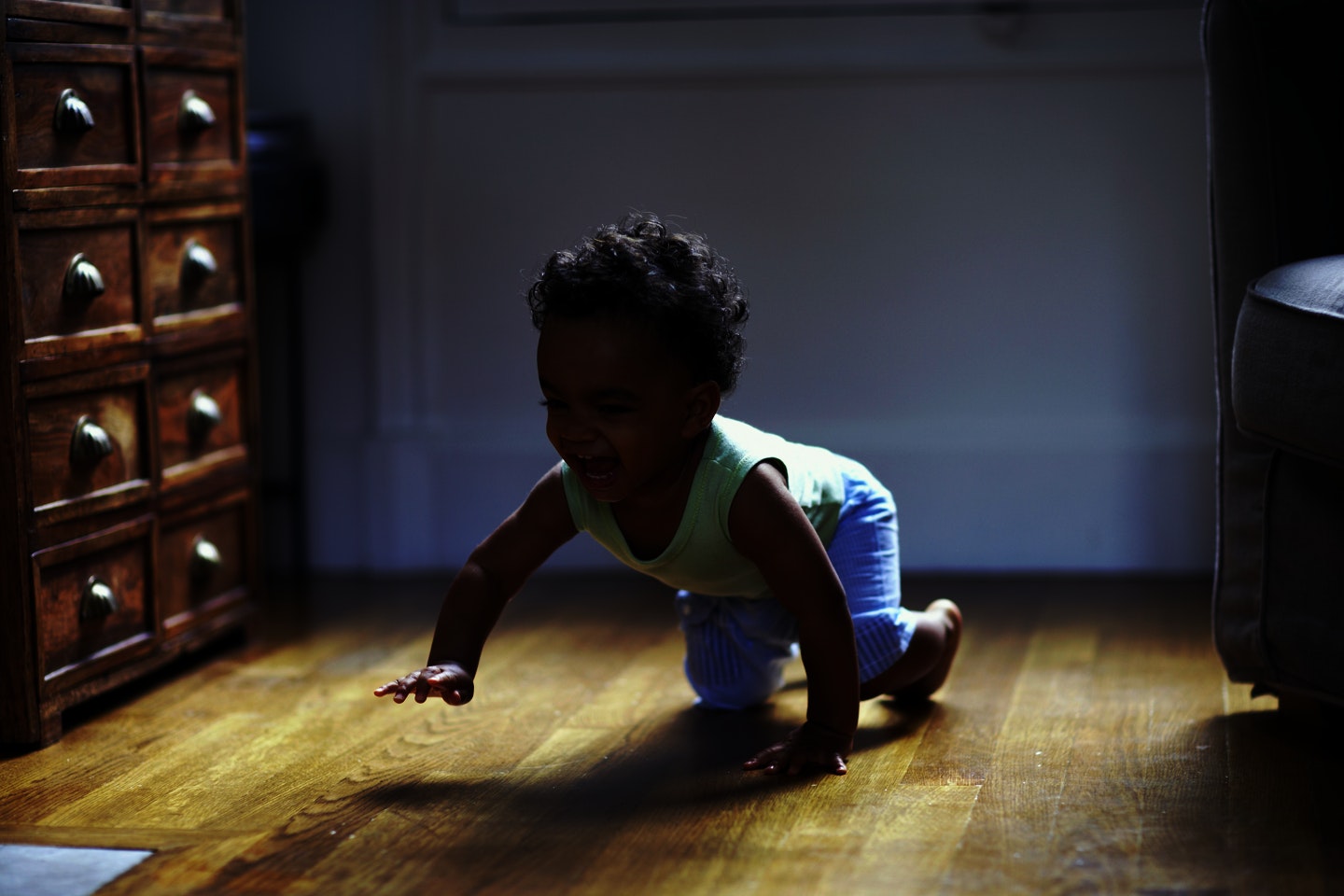
5. Cycle their legs
When they're lying on their back, gently cycle your tot’s legs as though they were riding a bicycle. ‘This fun way to connect with your baby introduces them to the idea of alternating motion,’ says Sally. ‘You’re teaching them that their legs can work independently – one after the other – as they will do when they eventually crawl.’
6. Sing a body song
Touch your baby on their hands, feet and tummy as you sing this song, then give them a hug at the end!
‘These are baby’s hands
And these are baby’s feet.
This is baby’s tummy –
Isn’t baby sweet!’
7. Keep them close
‘In the early weeks, your baby will start to respond to motion and start developing their sense of balance when they're being held by you,’ says Sally. ‘Being close to you makes them feel secure and confident – and just carrying them in your arms means that they're learning from your movements and adjusting to the different positions of your body.’
8. Let them kick
Rather than always positioning your baby in their gym so they can reach for the hanging toys, slide them up so they can kick at them, too. ‘When your baby lies on their back, it’s easy for them to kick and move their hips and pelvis,’ says Sally, ‘and this builds the strength, stability and coordination in their lower body.’
9. Surf on a ball
Hold your baby securely while they lie on their front on top of a gym ball, or birthing ball. Then carefully move the ball a little. And while you need to make sure you’re holding them very securely, make sure their weight is on the ball so they use their muscles to stay in balance.
10. Swing
Once your tot can sit up and has good head control, make visiting the baby swings at the park a regular treat. And aim for smooth, gentle motion at this early point. Your baby will continually adjust its body to even the smallest of motions. ‘And this helps to stimulate your baby’s balance mechanism, which responds to slow and gentle forward and backwards, side to side and tilting movements of their head, body or environment,’ says Sally. Slow-motion tends to be soothing, while rapid motion is arousing, so be sensitive to your baby's reactions and do not over-stimulate.
Things to avoid
Too much time in baby seats — The less time spent in a baby seat or carrier, the more time your baby will have to move around, explore and play. Eventually, they'll learn to crawl and then learn to walk.
Baby walkers — These can be once your baby has mastered crawling to help them transition to walking, however any time before just reduces the amount of time they'll spend on the floor learning to crawl. It can also interfere with muscle development too.
Pushing your baby before they're ready — As previously mentioned, every baby is different and will learn to craw in their own time. Sometimes when you try and force your child to learn a new skill that they're not ready for the opposite affect can happen and it take longer.
Real mum tips
‘Martha and Elijah were slow to pick up crawling – they didn’t start till they were 13 months. That was great for me because it meant that for the entire first year they stayed wherever I put them down! But Samuel has been entirely different: he rolled around everywhere from 5 months and commando crawled from 8 months. And now he’s so quick!’ - Sian Pugh is mum to Martha, Elijah and Samuel.
‘What really got my two children interested in crawling was taking them along to lots of baby classes. They’d watch the slightly older children and try to copy what they were doing – including crawling.’ - Laura Bland is mum to Alicia and Matilda.
‘My babies were motivated by having someone to follow. My eldest, Jessica, bottom shuffled after our German Shepherd, and then my two youngest crawled after her!’ - Elizabeth Dance, 40, from Cardiff, is mum to Jessica, Sophie and Lucy
When should I worry about my baby not crawling?
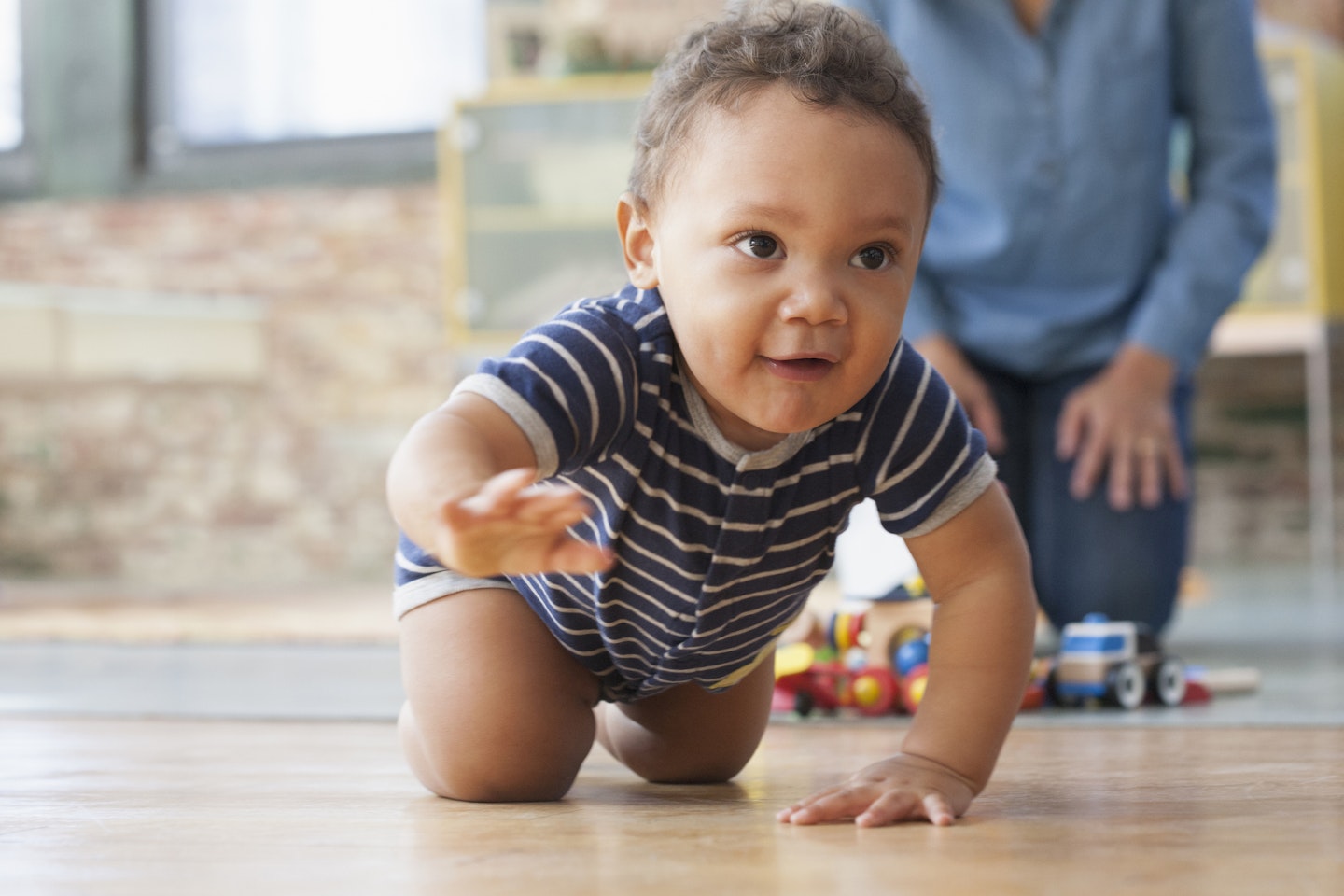
There's a pretty wide window for crawling as your baby could start anywhere between five and 13 months. However, some babies just skip crawling altogether. If your baby is being a little slow in your eyes when it comes to crawling, they may just be keen to learn other skills first, such as using their hands or figuring out how different objects work. Just be patient and try not to worry.
If, however, you find your baby is only using one side of their body to crawl or aren't making any progress in using their body to move around in general, then contact your GP.
Products to encourage baby to crawl
To help your tot on their way, we’ve picked our favourite toys that your baby will love to chase and play with.
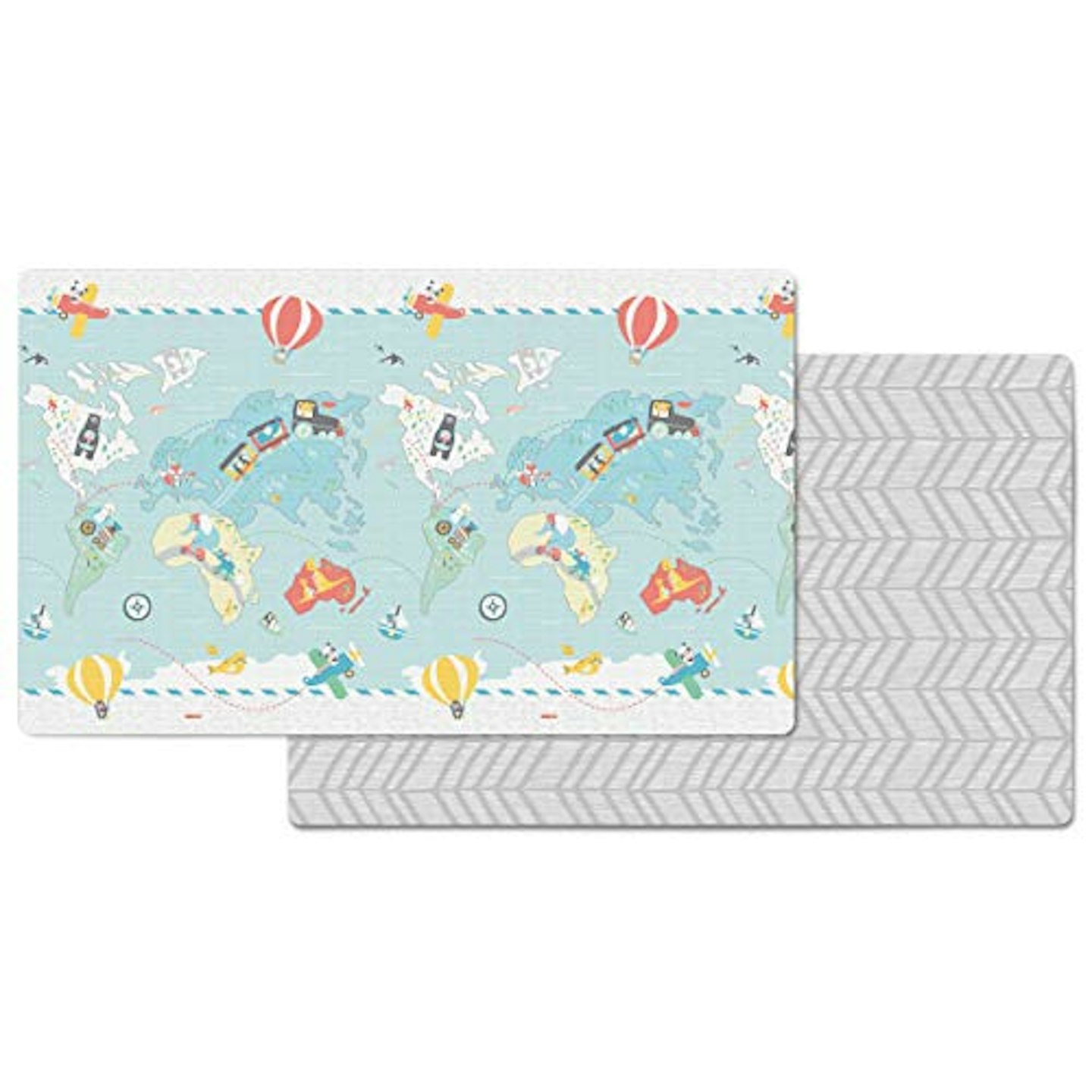
This soft playmat is definitely a worthwhile investment! The wonderful designs will go with any room and are perfect for tummy time and encouraging your little one to crawl. The soft cushioned foam mat is suitable for any tumbles as well.
Review: "Wow, this is one of the very few child products that I love. My wife selected a lot of baby products before our baby boy was born. Most of them were just a regular products that can be replaced with a cheaper version for adults with much lower price tag. This mat is worth the money. It is very soft and I even use it from time to time for my morning exercises. It is great that it has two sides. You can use a colourful version to stimulate the baby. Afterwards, you can use it as a carpet in your child's room."
Watch your little ones face light up as this colourful, spinning ball lights up and grab your tots attention. With chunky buttons, sound effects and fun music, the ball can be rolled around, encouraging your little one to crawl after it.
Review: "My little girl loves this. We have wooden floors and it rolls around really well, so can't comment on how it fairs on carpet. I bought this for her when she was about 5/6 months and was sitting up on her own playing with it in her lap, and then using it to motivate her into crawling, and she's over 1 year now and still loves playing with it. It's very sturdy (the amount of times it's been thrown or dropped onto our floors and it's still going strong like the day we got it!) and just a great quality toy you'd expect from VTech, highly recommend."
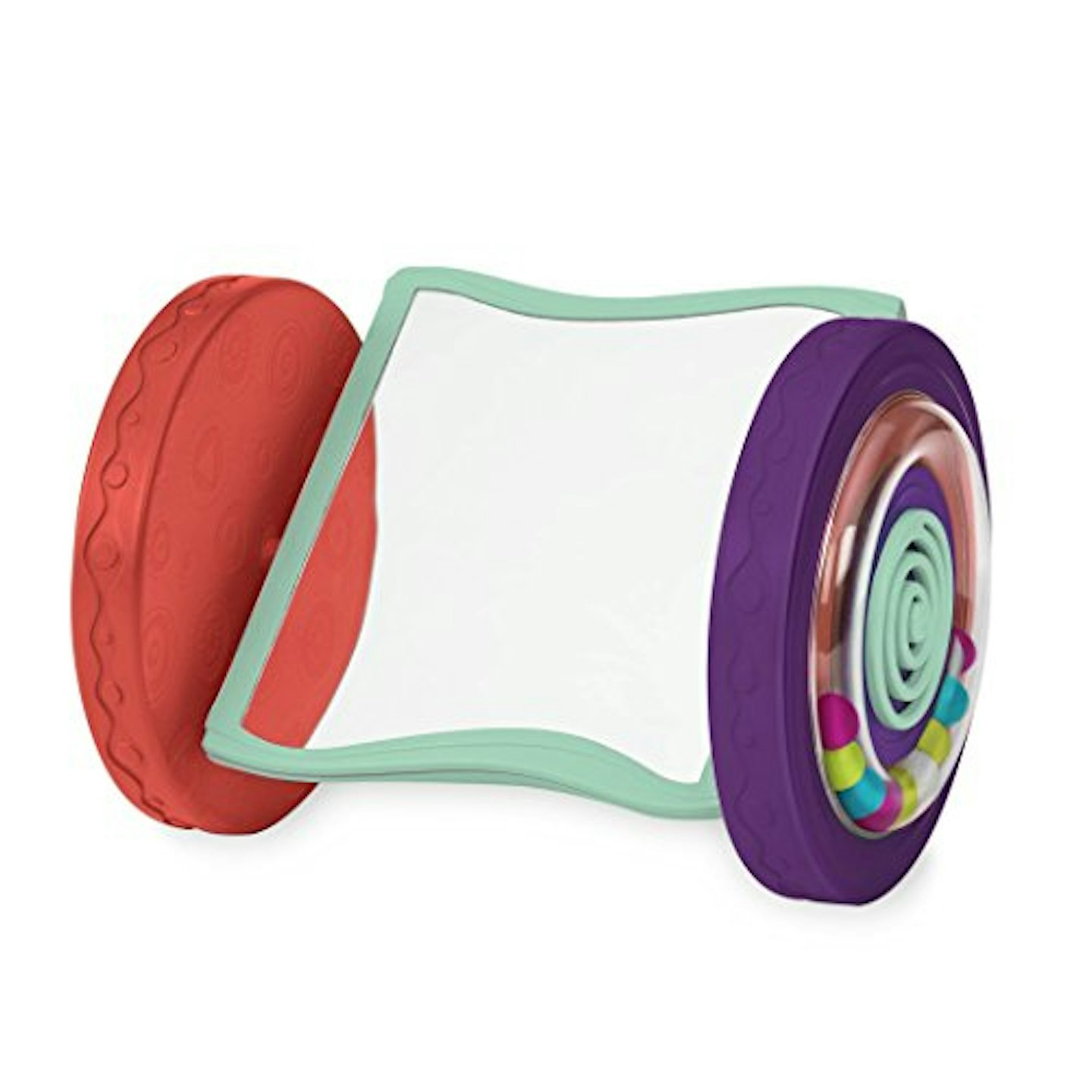
No matter how or where your tot pushes this roly-poly mirror, it always stays upright. With rattle beads in one wheel and spirals in the other, the rolling mirror is perfect to encourage movement and interaction from as soon as your little one is on their tummy.
Review: "This is the sort of toy that you pounce on if you have a baby in the house who is on their bottom or tummy, but shows no sign of wanting to learn to crawl. Most babies and very young children are fascinated by their reflections, and this clever toy rolls away when gently pushed, leading children to want to follow it. It encourages crawling by the mirror cleverly remaining upright as the wheels turn. This toy actively promotes crawling, and definitely is a must buy for childcare providers for babies of 6 mo +, parents and grandparents."
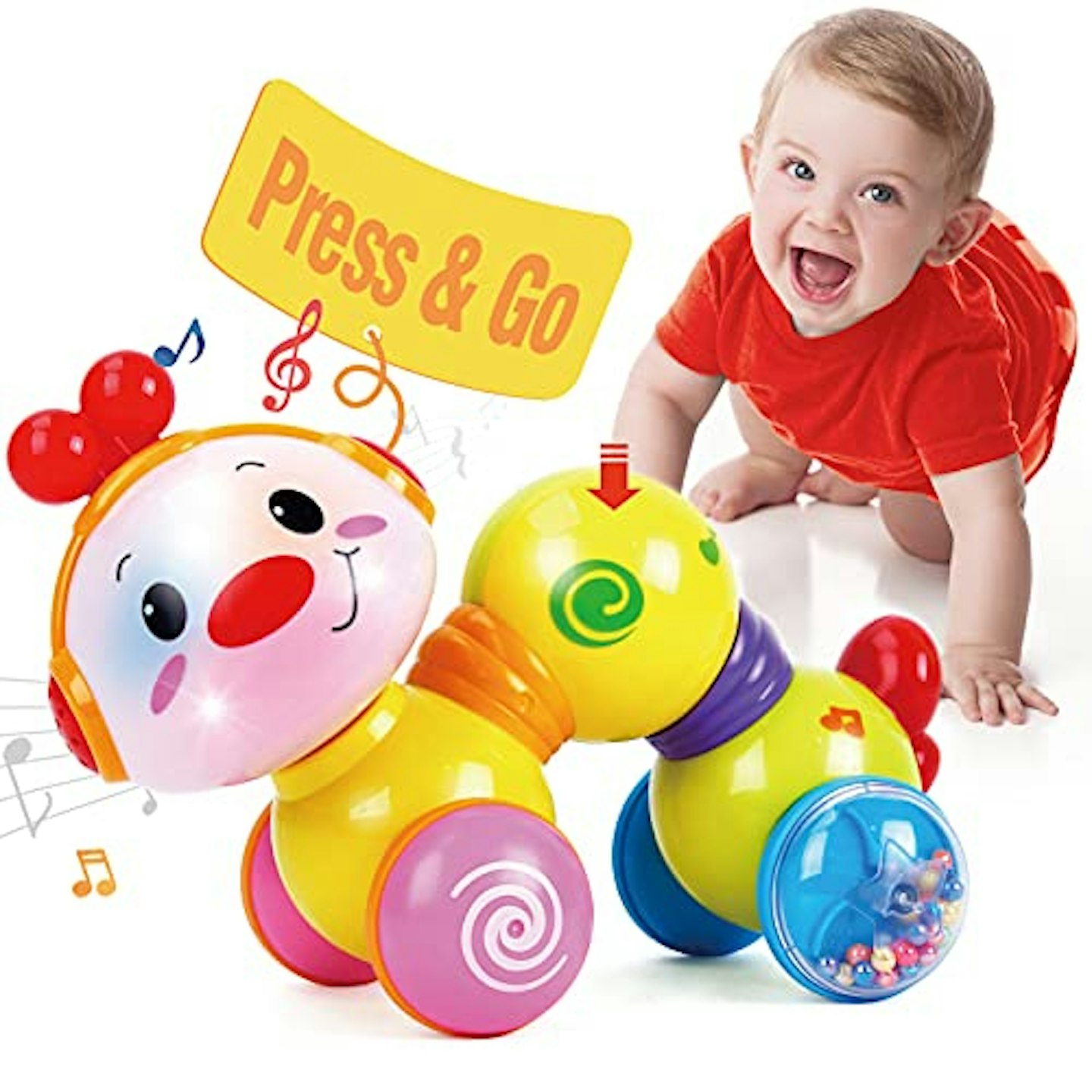
Your bubba will find a crawling companion in this colourful caterpillar. Push down on the centre ball to flatten the inchworm and release so it can start moving about, grabbing the attention of your toddler. As the caterpillar makes its way around the room playing sweet tunes and flashing lights, your bubba will start crawling after it in an attempt to keep up, building their muscle strength and improving gross motor skills in the process.
Review: "A very cute toy. My baby is delighted with it. It is very cute, at a good price, easily for play a baby. It's safe for teething."
Encourage your tot to move around with this electric bounce ball. It vibrates, rolls around the room and plays happy music to help attract your baby's attention and motivate them to start crawling. The toy is soft for the comfort of your little one, and is made with completely safe and non-toxic materials.
Review: "Our 9 month old princess absolutely loves this. Unlike another similar one she has where you have to press a button to get it moving, a simple push of the ball gets this jiggling about which means she can do it herself. She figured this out very quickly."
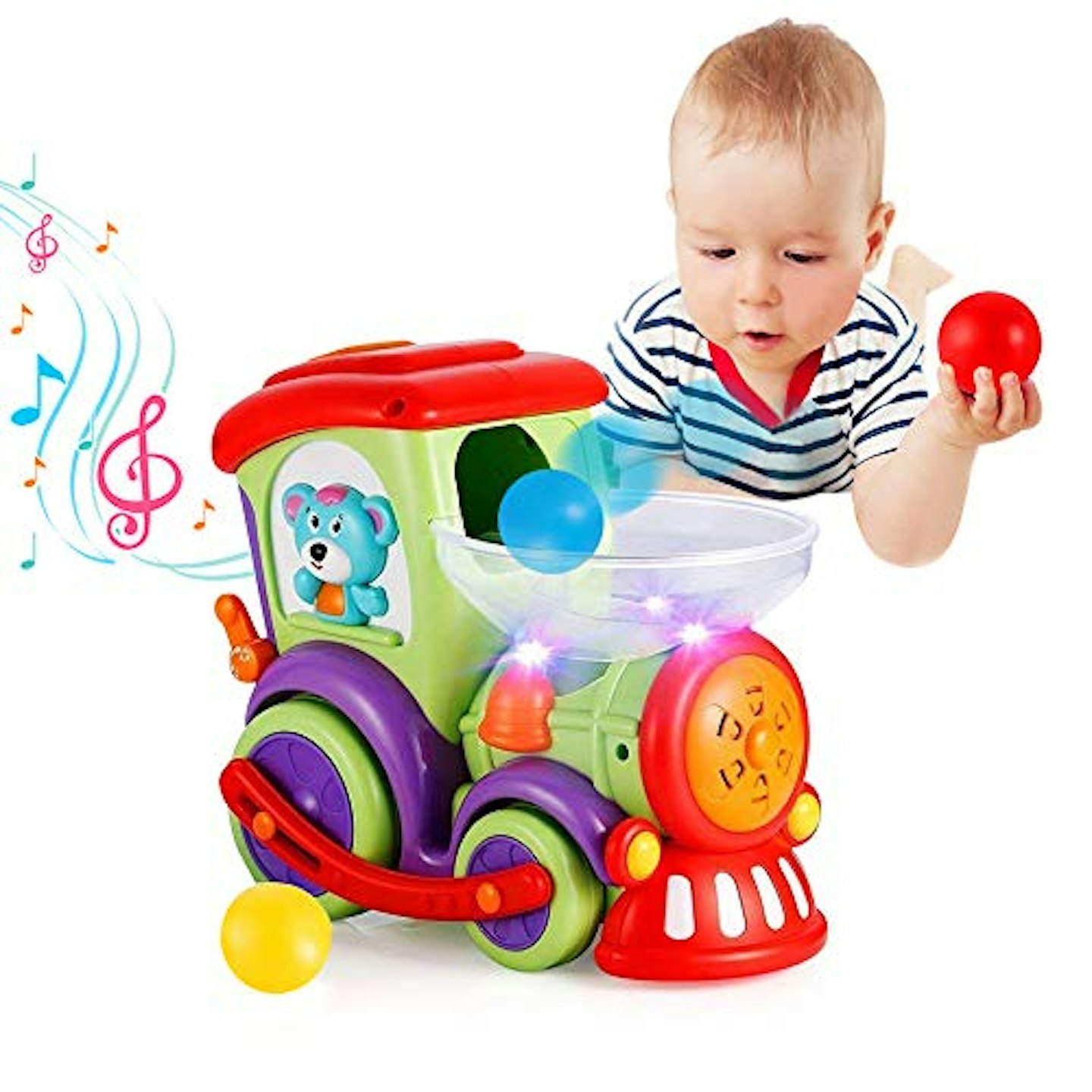
Choo choo! This adorable toy train comes with three balls that your toddler can drop in, causing the train to move forward with lights and music. Your little one won't help but chase after the moving train, improving their fine motor skills and hand-eye coordination while doing so. Suitable for children over 18 months.
Review: "What a fantastic toy! This train keeps my one year old occupied for ages. The bright colours and sounds and movements are good for his motor skills too. It would be brilliant for children who are on the verge of walking/crawling, as the train makes them go and "fetch" the balls. I absolutely love this and will probably get more for my friend's children at Christmas. Thank you!"
